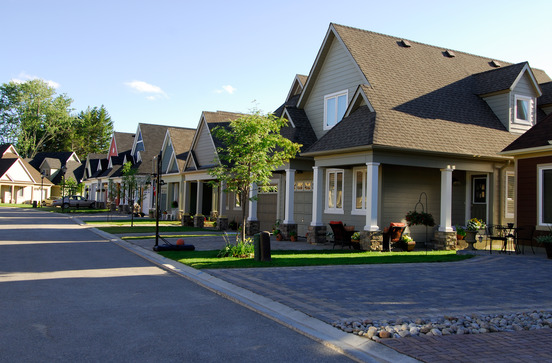Think about the impact water has on even the largest of structures; the Grand Canyon, Mt. Rainier, and cliffs along England’s coast all came about after eons of water erosion. It doesn’t take an ocean of water to erode a structure, though. It’s amazing how a little water can make a world of difference, and unless you’re interested in a home remodel nightmare, it’s important to give water the respect it deserves. Out of all the things that might keep you up at night, one you probably haven’t considered is poor drainage. Poor drainage can wreak havoc on your foundation, reducing the value of your home in a matter of weeks or month. If you’re concerned that something might be awry with your home’s plumbing, don’t hesitate to contact a trained professional; waiting too long could be the costliest mistake you’ll make all year. Drainage seems pretty straightforward: water falls on your roof, is caught by your gutters, and then goes down through the downspout. However, any one of these points, as well as the way rainwater hits your lawn, can all contribute to drainage problems.

Bad drainage is at it’s most obvious when your lawn is flooded. All of that water needs to go somewhere, and if it doesn’t drain into the water table or footing drains underneath, it’ll pool on the surface of your lawn. If your lawn sits on a hill, the water may roll towards your house. Under those circumstances water may start to soak into the foundation of your home, leading to water soaking into the concrete. Over time, the water can cause cracks in the concrete, or even rotting of the wooden posts that secure your home to the ground. This danger is even more apparent in the Winter. Under freezing conditions the water expands into ice, hastening the pace that cracks appear in your foundation. These cracks allow plants to take root in the foundation, breaking the concrete even further. Though you may not notice it, within months water and plants could severely damage your foundation.
When the drainage problems results from roofing problems, rather than your lawn, similar situations can arise. Oftentimes,drainage problems are a result of poor maintenance. Gutters may fill up with leaves, and the water may start to flood over the side of the roofs. On most houses, water flows through the gutters towards downspouts. These downspouts direct the water to places where they can’t damage the concrete. However, when the water starts pouring over the roof it can soak into your foundation. Obviously, whether the water comes from your lawn or the roof, this can cause your foundation to collapse, making the house unsafe to stay in.
One of the most serious drainage problems comes in the form of leaks in your roof. Roof leaks can cause less noticeable drainage through your walls, ruining dry wall as the water runs down to the foundation. This means that instead of the problem being relatively confined to your foundation, you may end up having walls that are structurally unsound, only furthering a drainage nightmare. Additionally, mold and mildew may set in; these problems could make your house next to worthless. This is because mold and mildew are difficult to get rid of and in high enough concentrations may contribute to respiratory problems.
If you notice drainage problems on your roof or in your yard, the key thing is to act fast, especially if you’re not sure when they started. Problems with water drainage may not seem like a big issue if your house isn’t flood, but overlooking them could ruin your investment in the house. Luckily, trained professionals can help to resolve problems with your home’s drainage. Check out http://www.nlinc.ca/lawn-care-toronto/ to learn more about how professionals can help resolve your drainage problems before they take a bite out of your home’s property value. Remember, the sooner you confront these problems with professional support, the less damage drainage issues will do to your home- and your bank account.
